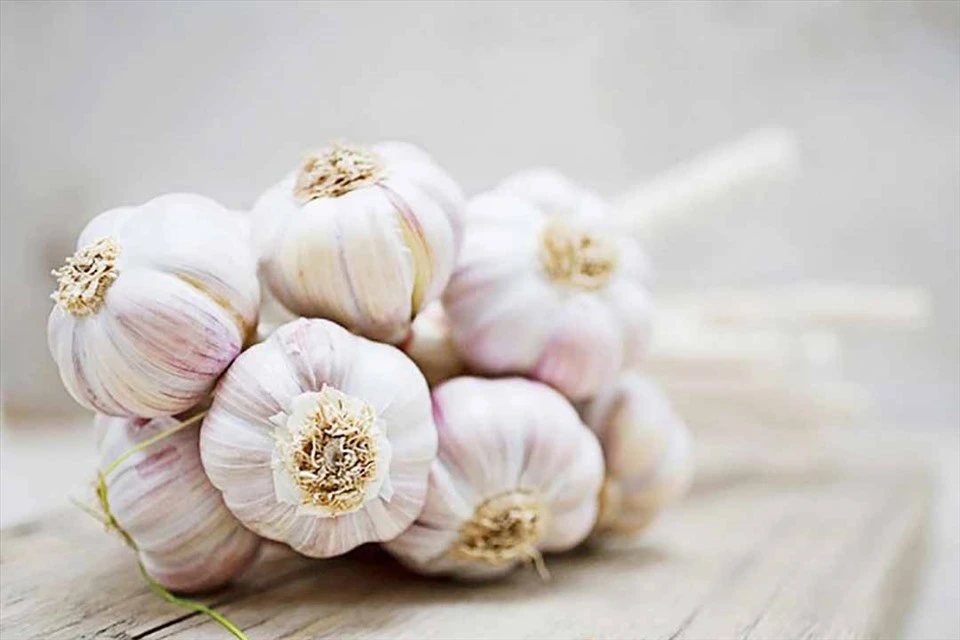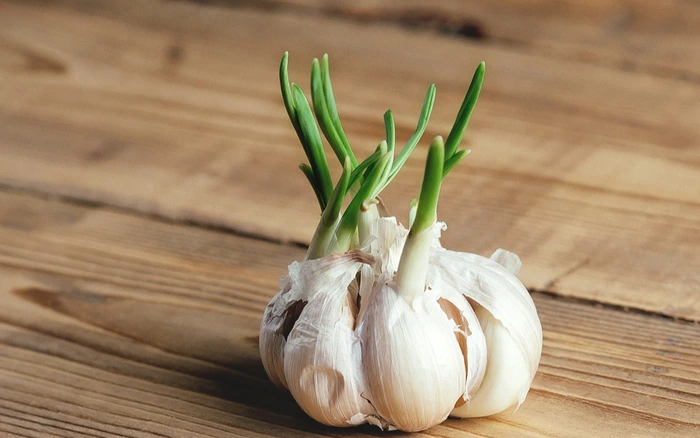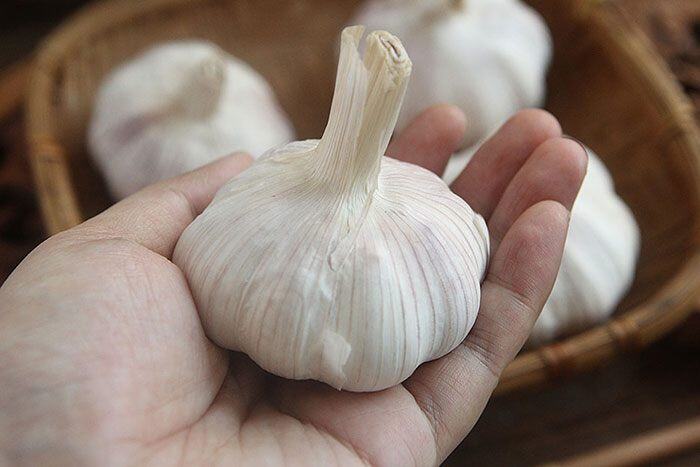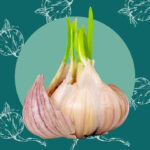
Avoid these four types of garlic when shopping, and don’t be tempted to grab them just because they’re convenient. Doing so will only waste your money and impact the quality of your meals.
Sprouted Garlic
Unlike some sprouted grains that can be toxic, sprouted garlic is not harmful to your health. In fact, some studies suggest that garlic sprouts contain powerful antioxidants. However, this doesn’t mean you should opt for sprouted garlic.
As garlic begins to sprout, its nutrients are dispersed to nourish the sprout, causing the flesh to become spongy and soft. The distinctive garlic aroma diminishes, and the cloves often become hollow and bland. If you’re a fan of stir-fried or fried dishes that rely on garlic for their distinctive flavor, this type of garlic is not ideal.

Note: If you accidentally buy sprouted garlic, you can use the sprouts for stir-frying vegetables, but avoid using the cloves for dishes that require a strong garlic flavor, such as garlic oil, soup, or dipping sauce.
Pure White Garlic
Garlic bulbs with pristine white skins often attract buyers with their appealing and uniform appearance. However, this is a trap that leads many to believe that whiter is cleaner and better.
In reality, pure white garlic tends to have lower nutrient content and a milder flavor compared to purple-skinned garlic (such as Ly Son garlic or single clove garlic). Purple-skinned garlic is prized for its higher allicin content, an important compound that offers antibacterial and anti-inflammatory benefits.

So, savvy home cooks should prioritize garlic with slightly purple or off-white skins, dry and tightly bound cloves, and a distinctive aroma. While the price may be slightly higher, it’s worth it for the superior quality.
Garlic with Separated Cloves (“Smiling” Garlic)
You may have seen garlic bulbs with separated cloves and a cracked, dry skin. This type of garlic is often referred to as “smiling” garlic. While it may seem convenient for cooking, it’s actually a sign that the garlic has been stored for a long time or has undergone a sudden change in environment, leading to dry skin and separated cloves.
“Smiling” garlic is highly susceptible to mold and moisture absorption from the environment. Within a few days, you may notice discoloration, softening, or black mold growth.

Therefore, if you need garlic for immediate use within a few days, you can opt for “smiling” garlic. However, if you intend to store it for a longer period or buy in bulk, choose bulbs that are intact, with tight skins and no signs of cracking or separation.
Soft and Spongy Garlic
One of the simplest ways to assess garlic quality is by touch. Gently squeeze the bulb, and if it feels firm and solid, it’s fresh. On the other hand, if it feels soft, slightly mushy, or has any sunken areas, it’s likely that the garlic has deteriorated, developed mold, or has been stored for too long.
Soft garlic has lost most of its essential oils, resulting in a less aromatic flavor and a potential risk of digestive issues if consumed in large quantities.
When purchasing garlic, look for bulbs with intact stems, a dry surface, no strange odors, and absolutely no signs of rot or softness at the base.


































